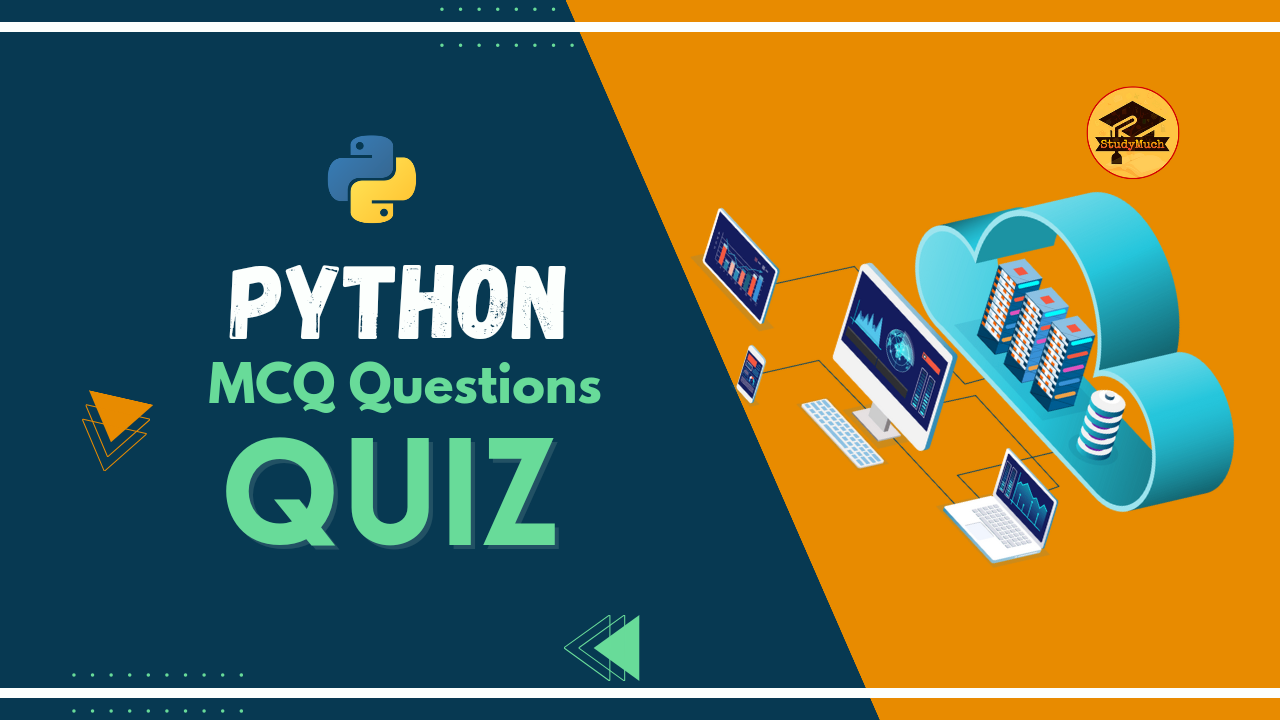Top 10 MCQs of Python

Top 10 MCQs of Python
Python has established itself as one of the most popular programming languages, known for its simplicity, readability, and versatility. Whether you’re a beginner or an experienced developer, testing your knowledge with multiple choice questions (MCQs) is a great way to strengthen your understanding of Python concepts. In this blog post, we present Top 10 MCQs of Python Questions and Answers (Top 10 MCQs of Python) to help you assess your proficiency in Python.
Top 10 MCQs of Python
Q1. What is Python?
a) A large snake
b) A high-level programming language
c) A type of database
d) A computer manufacturer
Answer: b) A high-level programming language
Explanation: Python is a high-level, interpreted programming language known for its readability and simplicity. It is widely used for web development, data science, artificial intelligence, and more.
Q2. Which of the following is the correct way to comment in Python?
a) // This is a comment
b) # This is a comment
c) /* This is a comment */
d) — This is a comment
Answer: b) # This is a comment
Explanation: In Python, comments are preceded by the ‘#’ symbol. Anything following the ‘#’ on that line is considered a comment and is ignored during the execution of the program.
Q3. What is the purpose of the ‘elif’ keyword in Python?
a) It is short for “else if” and is used to add multiple conditions
b) It is a typo and does not have any significance
c) It is used to define a function
d) It stands for “else loop” and is used in loops
Answer: a) It is short for “else if” and is used to add multiple conditions
Explanation: ‘elif’ is used to introduce an additional condition in an ‘if’ statement, allowing the program to check multiple conditions sequentially.

Q4. What does the term “PEP 8” refer to in the context of Python?
a) A Python enhancement proposal
b) A Python editor program
c) A Python error code
d) A Python extension package
Answer: a) A Python enhancement proposal
Explanation: PEP 8 is the style guide for Python code, providing conventions for writing clean, readable, and consistent code.
Q5. What is the purpose of the ‘with’ statement in Python?
a) It is used for loop control
b) It is used for exception handling
c) It is used for file input/output operations
d) It is used for declaring variables
Answer: c) It is used for file input/output operations
Explanation: The ‘with’ statement is used to simplify the management of resources, especially when dealing with file operations. It ensures that resources are properly acquired and released.
Q6. What is the output of the following code snippet?
print(list(range(5)))
a) [0, 1, 2, 3, 4]
b) [1, 2, 3, 4, 5]
c) [0, 2, 4, 6, 8]
d) [5, 4, 3, 2, 1]
Answer: a) [0, 1, 2, 3, 4]
Explanation: The range(5) function generates a sequence of numbers from 0 to 4, and the list() function converts that sequence into a list.
Q7. What is the purpose of the ‘lambda’ keyword in Python?
a) It is used to define a multiline function
b) It is used to define a variable
c) It is used to create anonymous functions
d) It is used for conditional statements
Answer: c) It is used to create anonymous functions
Explanation: ‘lambda’ is used to create small, anonymous functions without a formal function definition.
Q8. In Python, what is the purpose of the ‘super()’ function?
a) It is used to terminate the program
b) It is used to call the parent class method
c) It is used to define a superclass
d) It is used to initialize a variable
Answer: b) It is used to call the parent class method
Explanation: ‘super()’ is used to call a method from the parent class within a subclass.
Q9. What does the ‘pass’ statement do in Python?
a) It is used to define a variable
b) It is used for loop control
c) It is used to terminate the program
d) It is a no-operation placeholder
Answer: d) It is a no-operation placeholder
Explanation: ‘pass’ is a null operation that serves as a placeholder where syntactically some code is required, but no action is desired or necessary.
Q10. How is memory managed in Python?
a) Memory is managed automatically using a garbage collector
b) Developers need to manually allocate and deallocate memory
c) Python does not use memory
d) Memory is managed by the operating system
Answer: a) Memory is managed automatically using a garbage collector
Explanation: Python uses automatic memory management through a garbage collector, which handles the allocation and deallocation of memory.
Conclusion:
Mastering Python requires a solid understanding of its core concepts and features. By tackling these top 10 MCQ questions, you can assess your knowledge and identify areas for improvement. Keep exploring Python, practicing your coding skills, and stay updated with the latest developments in the Python community to become a proficient Python programmer. Happy coding!
Learn More;


0 Comments